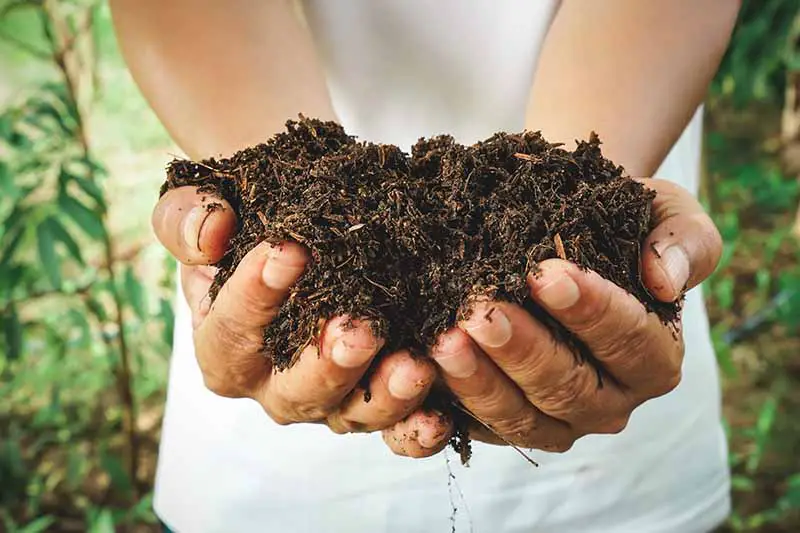Tea is a favourite beverage enjoyed in many houses over the world. But, what about the used tea leaves? Have you been scrapping it since so long? If yes, you need to stop here and look at the amazing uses of tea leaves in this post. Now, you must be wondering what to do with the used tea leaves? Here are the answers to all your questions. Just take time and read through this piece of information. belive me, once you read this, you’ll never waste the used tea leaves.

Contents
- 1 Can You Reuse Tea Leaves?
- 2 How to Reuse/ Repurpose Used Tea Leaves?
- 3 Used Tea Leaves for Skin
- 4 Used Tea Leaves for Art Work
- 5 How to Prepare Used Tea Leaves for Further Usage?
- 6 How to Dry Used Tea Leaves?
- 7 Is Used Tea Leaves Good for Plants?
- 8 Can I Put Used Tea Leaves on the Garden?
- 9 Conclusion on Using Used Tea Leaves
Tea leaves can be used end-to-end and still serve the nature. Let us read below for more information on uses of used tea leaves.
Can You Reuse Tea Leaves?
Yes, you can reuse tea leaves, but the quality of the tea will decrease with each subsequent steeping. The second cup of tea will be weaker in flavor and may have a slightly bitter taste. It is generally recommended to steep tea leaves only once, as this will give you the best flavor and aroma. If you’re looking to extract more flavor, you can steep the tea leaves for a longer time, but this will also increase the chances of the tea becoming bitter.
Additionally, it is important to consider the type of tea you’re using, as some teas can handle multiple steepings better than others. For example, black and oolong teas are known to hold up well with multiple steepings, while green and white teas tend to become bitter after the first steeping.
Also, you have many other ways in which you can make use of these used tea leaves. We shall see them in later part.
How to Reuse/ Repurpose Used Tea Leaves?
Not even a single day of mine gets a tea off and the residue tea in my house is being used for multiple reasons listed below. Here are some things even you can do with used tea leaves:
Composting:
Used tea leaves can be added to a compost pile to provide nitrogen to the soil. The leaves are a rich source of organic matter, which is important for building healthy soil structure. In addition, the high levels of nitrogen in the tea leaves help to support the growth of bacteria and other microorganisms in the compost pile, which are essential for decomposition and nutrient cycling. Simply add the used tea leaves to your compost pile along with other organic materials like leaves, grass clippings, and food scraps. This compost has a magical aroma which I have observed in my home garden.
Fertilizer:
Used tea leaves can be mixed with water to create a liquid fertilizer for your plants. The water will extract the nutrients from the tea leaves, creating a nutrient-rich solution that can be applied directly to the soil. The tea leaves are a source of nitrogen, potassium, and other essential nutrients that plants need for healthy growth. To make the fertilizer, simply steep a handful of used tea leaves in a gallon of water for several hours. Then, strain out the leaves and use the tea to water your plants.
Pest Control:
Sprinkling used tea leaves around plants can deter pests like slugs and snails. The strong scent of the tea leaves can be unpleasant for these creatures, and the rough texture of the leaves can also make it difficult for them to move around. Additionally, the high levels of tannins in the tea leaves can have a toxic effect on some types of pests, helping to keep them away from your plants.
Face Scrub:
Used tea leaves can be made into a face scrub by mixing them with honey or coconut oil. The rough texture of the tea leaves can help to gently exfoliate dead skin cells, leaving your skin feeling soft and refreshed. The tea leaves are also a source of antioxidants, which can help to protect your skin from damage caused by free radicals.

To make the face scrub, simply mix a small amount of honey or coconut oil with a handful of used tea leaves. Then, apply the mixture to your face in a circular motion, and rinse thoroughly with water. This is one therapy which gives an amazing glow to my skin.
Cleaning:
Used tea leaves can be used to clean hard surfaces like countertops and windows. The natural tannins in the tea leaves can help to remove stains and leave a fresh scent. To clean with tea leaves, simply steep a handful of leaves in hot water, then use the water to wipe down surfaces. The tea leaves can also be used as a scrubber to remove stubborn stains.
Air Freshener:
Placing a small bowl of used tea leaves in a room can help to freshen the air and eliminate odors. The scent of the tea leaves can help to neutralize unpleasant odors and leave a fresh, clean scent in the room. Simply place a small bowl of used tea leaves in a room, and allow them to air out.
Fire Starter:
Dried used tea leaves can be used as kindling to start a fire in a fireplace or campfire. The tea leaves are dry and flammable, and they can help to get a fire started quickly. Simply arrange a handful of dried tea leaves in the fire pit, and light them. The tea leaves will catch fire easily, and can help to ignite other materials like wood or paper.
Hair Rinse:
Used tea leaves can be used as a final rinse after washing your hair to add shine and remove buildup. The tea leaves are a natural source of tannins, which can help to remove excess oil and product buildup from the hair. Simply steep a handful of tea leaves in a gallon of water, then use the tea as a final rinse after washing your hair. The tea will help to remove any remaining shampoo or conditioner, leaving your hair feeling clean and refreshed. Additionally, the tea can help to add shine to your hair and make it look more vibrant. To use the tea as a hair rinse, simply pour the tea over your hair, massage it in, and let it sit for a few minutes before rinsing it out with water.
These are some of the many uses for used tea leaves. Whether you’re looking to reduce waste, save money, or simply make the most of your resources, using tea leaves in these ways can be a great way to make the most of your tea-drinking experience.
Used Tea Leaves for Skin
Used tea leaves can be beneficial for the skin in several ways:
- Exfoliation: The rough texture of the tea leaves makes them a gentle exfoliant, helping to remove dead skin cells and reveal smoother, brighter skin.
- Antioxidants: Many types of tea, such as green tea, black tea, and white tea, are rich in antioxidants that can help to protect the skin from damage caused by free radicals, such as environmental pollution and UV radiation.
- Inflammation: The anti-inflammatory properties of tea can help to soothe irritated skin, reduce redness and puffiness, and improve the overall appearance of the skin.
- Hydration: The tannins in tea can help to tighten and firm the skin, while the antioxidants and anti-inflammatory compounds can help to improve skin hydration.
To use used tea leaves for skin care, you can brew a strong tea with the used tea leaves and apply it directly to your skin as a toner, or mix the tea with other ingredients, such as honey, aloe vera, or lemon juice, to create a homemade face mask. You can also add used tea leaves to your bath water for a relaxing and rejuvenating soak.
Note: It is important to note that not all skin types will react positively to tea leaves, and it’s always a good idea to do a patch test before using any new skin care product, including tea. Additionally, if you have sensitive skin, it’s best to use tea leaves in moderation, as the tannins in the tea can be harsh for some people.
Used Tea Leaves for Art Work
Used tea leaves can be a unique and interesting addition to various art projects, such as:
- Paper Art: Mix used tea leaves with water to create a tea-stained paper pulp, and then use it to make handmade paper. The tea leaves will add color and texture to the paper, making it ideal for use in collages, journals, and other mixed media projects.
- Painting: Tea can be used to create a watercolor effect when mixed with water and paint. Simply steep used tea leaves in hot water to create a tea-colored liquid, and then mix it with your paint to create a tea-stained effect.
- Dyeing: Used tea leaves can be used to dye fabric, paper, and other materials. Simply steep the tea leaves in hot water to create a tea-colored liquid, and then use it to soak the material you wish to dye.
- Printing: Used tea leaves can be used to make unique prints on paper and fabric. Simply place the tea leaves on the surface you wish to print, apply pressure, and lift to reveal the tea leaf impression.
These are just a few examples of how used tea leaves can be used in art projects. The possibilities are endless, so feel free to get creative and find new ways to incorporate used tea leaves into your artwork.
How to Prepare Used Tea Leaves for Further Usage?
Here’s how you can prepare used tea leaves for further usage:
- Drying: Before you use your used tea leaves for other purposes, you’ll need to dry them. You can do this by laying the tea leaves out on a clean, dry surface and allowing them to air dry for several hours, or overnight. You can also dry them in an oven on low heat, or in a dehydrator. Once the tea leaves are dry, they can be stored in an airtight container for future use.
- Steeping: To extract the nutrients from the tea leaves, you’ll need to steep them in water. This can be done by placing a handful of used tea leaves in a pot or bowl and covering them with boiling water. Let the tea leaves steep for several hours, or overnight. Then, strain out the leaves and use the tea water for your desired purpose.
- Grinding: To use tea leaves as a scrub, face mask, or cleaning agent, you’ll need to grind them into a fine powder. This can be done by using a coffee grinder or mortar and pestle. Once the tea leaves are ground, you can use them as needed.
- Mixing: To use tea leaves in a hair rinse or face scrub, you’ll need to mix them with other ingredients like honey, coconut oil, or baking soda. Simply add a handful of used tea leaves to a bowl, and mix in the desired ingredients until a paste is formed. Then, apply the mixture as needed.
These are the basic steps for preparing used tea leaves for further usage. By drying, steeping, grinding, and mixing your used tea leaves, you can turn them into a variety of useful products for your home and personal care routine.
How to Dry Used Tea Leaves?
To dry used tea leaves, you can follow these steps:
These are the basic steps for drying used tea leaves. By air-drying, oven-drying, or dehydrator-drying, you can prepare the tea leaves for future use in a variety of ways.
Is Used Tea Leaves Good for Plants?
Yes, used tea leaves can be good for plants. Used tea leaves contain nutrients that are beneficial for plant growth, such as nitrogen, phosphorus, and potassium. Additionally, tea leaves are a good source of organic matter, which can improve soil structure, water-holding capacity, and nutrient-retention.
Here are a few ways to use used tea leaves for your plants:
- Compost: Adding used tea leaves to your compost pile can help to improve the nutrient content and structure of the compost.
- Soil Amendment: Mixing used tea leaves into the soil around your plants can help to improve soil health and fertility.
- Foliar Spray: Brewing a strong tea from used tea leaves and using it as a foliar spray can help to provide additional nutrients to your plants and improve their health and vigor.
- Mulching: Using used tea leaves as mulch can help to retain moisture in the soil, regulate soil temperature, and suppress weed growth.
It is important to note that tea leaves can also lower the soil pH, so it may not be suitable for all plants. Before using tea leaves on your plants, it is a good idea to research the ideal soil pH for the specific plants you are growing, and adjust accordingly.
Overall, used tea leaves can be a great way to improve the health and fertility of your plants. Just be sure to use them in moderation, as too much tea can lead to an excess of nutrients and other problems.
Can I Put Used Tea Leaves on the Garden?
Yes, you can put used tea leaves on the garden. Used tea leaves contain nutrients such as nitrogen, phosphorus, and potassium that can benefit the growth of plants. Additionally, tea leaves are rich in organic matter, which can improve the soil structure, water-holding capacity, and nutrient-retention.
There are a few ways to use used tea leaves in your garden:
- Direct application: Simply spread the used tea leaves on top of the soil around your plants. As the tea leaves decompose, they will release nutrients into the soil.
- Composting: Add the used tea leaves to your compost pile to improve its nutrient content and structure.
- Mulching: Spread a layer of used tea leaves around your plants to retain moisture in the soil, regulate soil temperature, and suppress weed growth.
It is important to note that tea leaves can also lower the soil pH, so it may not be suitable for all plants. Before using tea leaves in your garden, it is a good idea to research the ideal soil pH for the specific plants you are growing, and adjust accordingly.
In general, used tea leaves can be a great way to add nutrients and organic matter to your garden, but it’s important to use them in moderation. Overuse of tea leaves can lead to an excess of nutrients, which can harm your plants.
Conclusion on Using Used Tea Leaves
Tea leaves, can be reused over and over again and again for multiple things. It revolves and can be kept in nature till the end. Also, it has proved its magic on skin and art which is manifested by many for years and years. This usable property of tea leaves doesn’t cause any wastage. So, if you have left over tea leaves simply re-use it and get the best out of it!!
If you know any other use, please write to us in the comments section below.










Add Comment